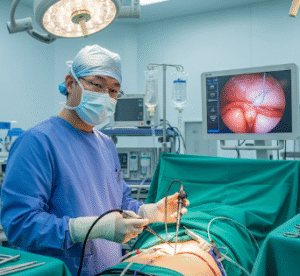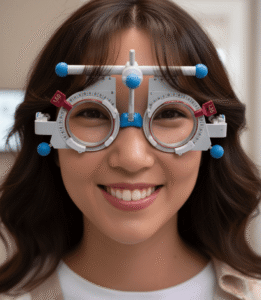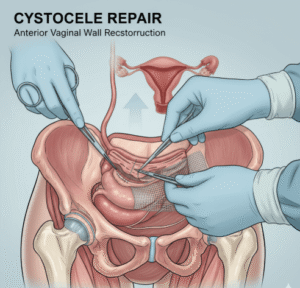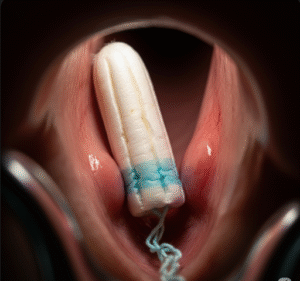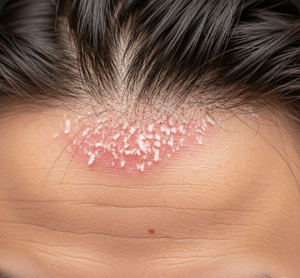Overview
Benign Prostatic Hyperplasia (BPH) is a common condition in older men characterized by non-cancerous enlargement of the prostate gland, which surrounds the urethra. As the prostate enlarges, it can compress the urethra and cause urinary symptoms such as difficulty starting urination, weak stream, or frequent nighttime urination.
BPH does not lead to prostate cancer, but it can significantly affect quality of life if untreated. In Korea, BPH is commonly managed through a combination of medical therapy, minimally invasive procedures, and surgical interventions, supported by advanced diagnostics and patient-centered care.
What is Benign Prostatic Hyperplasia?
BPH refers to the increase in size of the prostate gland due to proliferation of both glandular and stromal cells. This enlargement typically occurs in the central portion of the gland, pressing against the urethra and bladder. The resulting obstruction leads to lower urinary tract symptoms (LUTS), which are divided into storage symptoms (urgency, frequency, nocturia) and voiding symptoms (weak stream, straining, incomplete emptying).
The condition is strongly associated with aging, with nearly half of men in their 60s and over 80% of men in their 70s or older experiencing some degree of BPH.
Symptoms
BPH symptoms usually develop gradually and may include:
- Weak or intermittent urine stream
- Difficulty starting urination (hesitancy)
- Straining to urinate
- Incomplete bladder emptying
- Increased urinary frequency during the day
- Nocturia (waking up at night to urinate)
- Urgency and occasional incontinence
- Bladder discomfort or a feeling of pressure
Severe obstruction may lead to urinary retention, recurrent infections, or bladder stones.
Causes
The exact cause of BPH is not fully understood, but contributing factors include:
- Hormonal changes — Increased dihydrotestosterone (DHT) levels in aging men stimulate prostate cell growth
- Age — Prostate enlargement is strongly linked to natural aging
- Family history — Genetic predisposition increases the likelihood of developing BPH
- Metabolic disorders — Conditions such as obesity, diabetes, and cardiovascular disease may contribute to risk
Risk Factors
Men are more likely to develop BPH if they:
- Are over 50 years old
- Have a family history of prostate enlargement
- Have hormonal imbalances, particularly elevated DHT
- Are obese or have metabolic syndrome
- Have a sedentary lifestyle
Complications
If BPH is left untreated, it may lead to:
- Acute urinary retention — sudden inability to urinate, requiring emergency catheterization
- Chronic bladder outlet obstruction — leading to bladder dysfunction
- Recurrent urinary tract infections
- Bladder stones
- Kidney damage in severe cases due to backpressure on the urinary tract
Prevention
While BPH cannot be completely prevented, certain measures may reduce risk or slow progression:
- Maintaining a healthy weight and regular exercise
- Limiting caffeine and alcohol, which may irritate the bladder
- Managing chronic conditions such as diabetes and hypertension
- Regular medical check-ups and prostate screenings
- Avoiding medications that worsen urinary symptoms unless prescribed
Treatment Options in Korea
Diagnosis
Korean healthcare providers use a structured approach to diagnose BPH and rule out prostate cancer:
- Medical history and symptom scoring (International Prostate Symptom Score, IPSS)
- Physical examination, including digital rectal exam (DRE)
- Urinalysis and blood tests — including PSA (prostate-specific antigen)
- Ultrasound or imaging — to measure prostate size and detect bladder abnormalities
- Uroflowmetry — assessing urine flow rate and post-void residual urine
Medical Management
- Alpha-blockers (e.g., tamsulosin, alfuzosin) — relax prostate and bladder neck muscles to improve urine flow
- 5-alpha-reductase inhibitors (e.g., finasteride, dutasteride) — reduce prostate size over months by blocking DHT
- Combination therapy — sometimes used for more severe symptoms
- Phytotherapy — herbal supplements such as saw palmetto are occasionally used, though evidence is limited
Minimally Invasive Procedures
For patients with moderate to severe symptoms unresponsive to medications:
- Transurethral microwave therapy (TUMT) — heat treatment to reduce prostate tissue
- Transurethral needle ablation (TUNA) — radiofrequency energy to shrink the prostate
- Laser therapies — including holmium laser enucleation of the prostate (HoLEP) for rapid relief
Surgical Options
Surgery is reserved for severe cases or complications:
- Transurethral resection of the prostate (TURP) — gold-standard procedure to remove obstructive tissue
- Simple prostatectomy — for very large prostates, performed via open, laparoscopic, or robotic-assisted approaches
- Minimally invasive robotic procedures are increasingly available in Korean tertiary hospitals, reducing recovery time
Rehabilitation and Support
- Pelvic floor exercises and bladder training for symptom improvement
- Lifestyle counseling to reduce bladder irritants
- Regular follow-up to monitor prostate size, urinary function, and PSA levels
- Patient education on symptom management and recognizing complications



